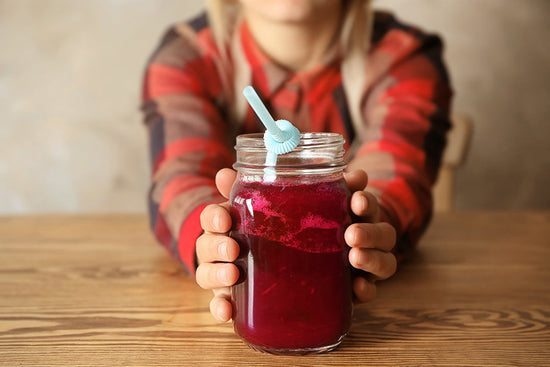Unlocking the Secrets of Freeze-Dried Herbal Supplements

Herbal supplements have continued to gain immense popularity for their potential to support the health and wellbeing of consumers. Among the various methods of processing herbs, freeze-drying technology stands out as a preferred choice for preserving their potency and purity. But what sets freeze-dried herbal supplements apart, and how does this innovative technique work? Let's embark on a journey to explore the science behind freeze-dried herbal supplements and uncover their unique advantages.
💡 Did you know
Did you know that freeze-drying technology is the best method to preserve the complete nutrient profile of herbal supplements and maintain potency of the fresh herb?
Understanding the Principles of Freeze-Drying:
Freeze-drying, also known as lyophilization, is a specialized dehydration process that involves freezing a substance and then removing the frozen water by sublimation under vacuum conditions. Sublimation is the process of a solid substance converting directly into a gaseous state without ever becoming a liquid.
If you have ever seen how “fog” is generated by dry ice, this is a good example of sublimation. In this example, solid Carbon Dioxide (“dry ice”) is sublimating into gaseous Carbon Dioxide fog. In freeze-drying, we apply this same concept to the water that is naturally present in the herbs we use to make our products. We “dry” the herbs by sublimating the water out of the herb.
You may be wondering; how can we sublimate water? Under normal conditions, ice must first melt into liquid water and then transition into vapor through evaporation. The answer lies in the use of a sealed vacuum chamber to reduce the atmospheric pressure of the freeze-dryer.
If you’re familiar with the phenomenon of water boiling at a lower temperature at higher elevations, the same principle is at work here. The reason that the boiling point of water changes is because atmospheric pressure lowers as your elevation increases. If you were to continue to lower the pressure of your environment, you would find that the boiling point of water continues to drop until it becomes the same as the freezing point. This is known as the “triple point”, where a material can exist as a solid, liquid, or gas in a stable equilibrium. It is at this point that water can be changed directly from a solid to a gas via sublimation.

Take a look at this graph, you’ll see that at normal air pressure (1 atm) water transitions to ice at 0° C and to vapor at 100° C. By following the y-axis down towards a lower pressure (0.006 atm), we reach the triple point.
These are the conditions that are created by Eclectic Herb’s freeze-dryers. This novel method of food preservation results in an extremely high-quality product, due to the low amount of heat used in the drying process. Additionally, because freeze-drying relies entirely on the manipulation of temperature and atmospheric pressure, no chemical additives are required in the process whatsoever.


Freeze-drying vs Air-drying
Freeze-drying:
- Preserves Nutrients: Exceptionally effective at maintaining the herbs' bioactive compounds, vitamins, and essential oils intact due to low heat usage.
- Retains Potency: Ensures the efficacy of the herbal supplements is kept at its peak by preserving phytochemicals like polyphenols and flavonoids.
- Extended Shelf Life: Offers superior shelf-stability without the need for preservatives, due to the removal of moisture in a way that inhibits bacterial growth.
- High Purity: Eliminates the need for chemical additives, offering 100% pure herbal supplements.
- Optimal Color, Flavor, and Aroma: Preserves the original qualities of the herb, making it closer to its fresh form.
Air Drying:
- Nutrient Loss: Higher temperatures can degrade sensitive vitamins, essential oils, and phytochemicals.
- Reduced Potency: The nutritional and medicinal qualities of herbs may be compromised over time due to the exposure to heat.
- Shorter Shelf Life: While still effective for drying, it does not offer as long a shelf life as freeze-drying and might require preservatives to extend it.
- Possible Additives: Depending on the process, chemical additives might be used to prevent spoilage.
- Alteration in Characteristics: Often results in a change in color, flavor, and aroma, making the product less similar to its original fresh state.



